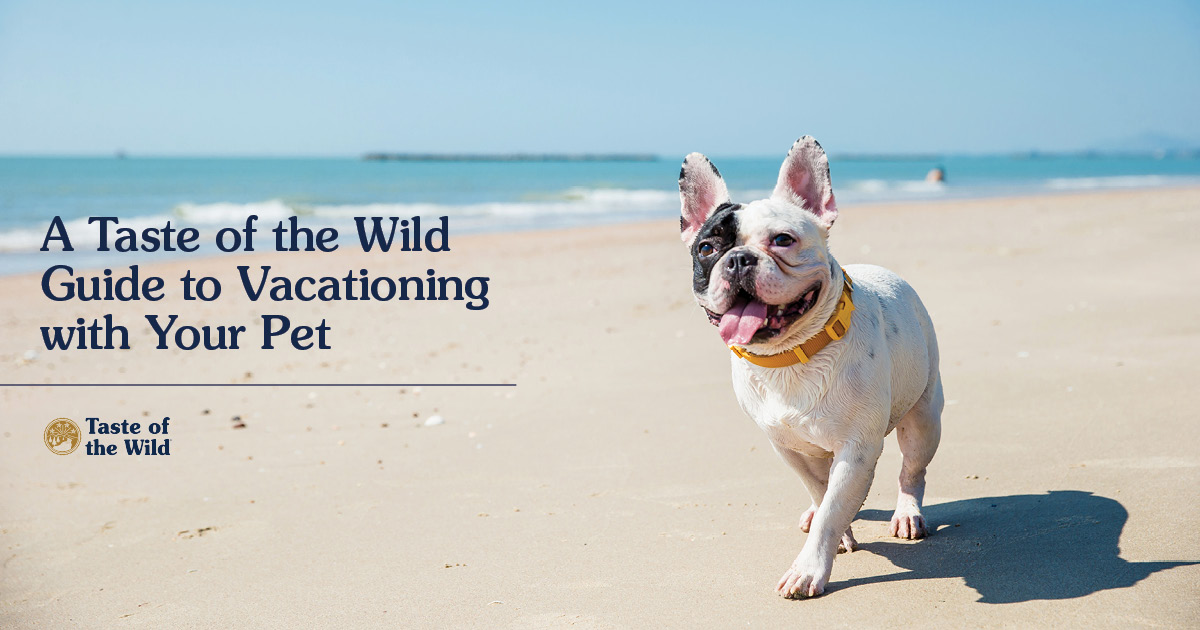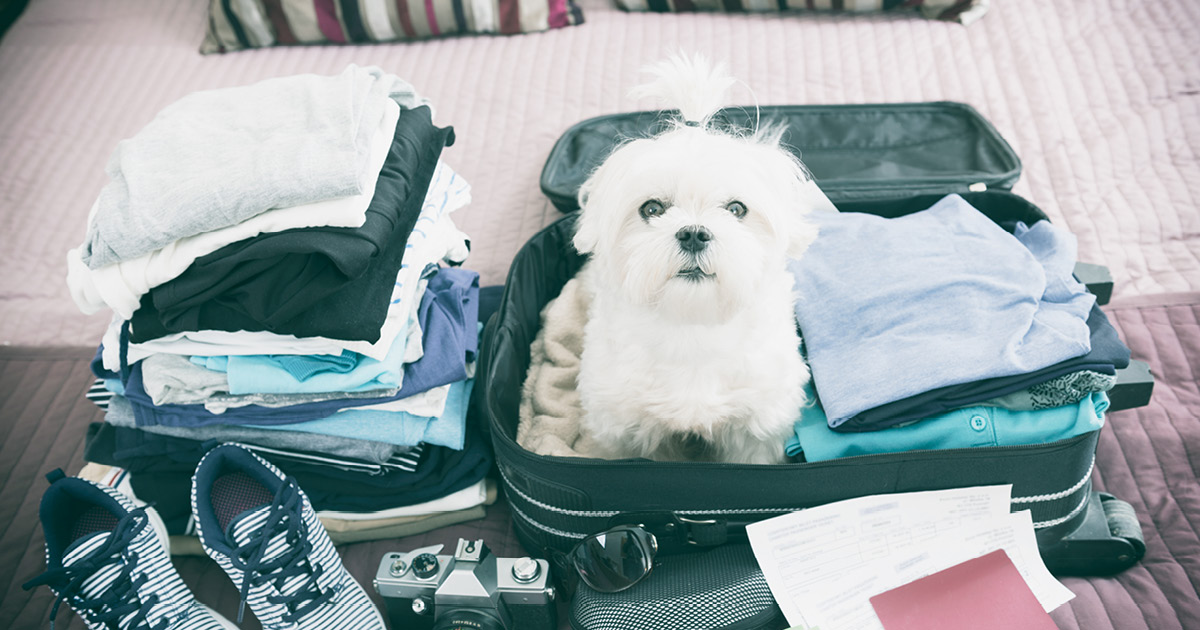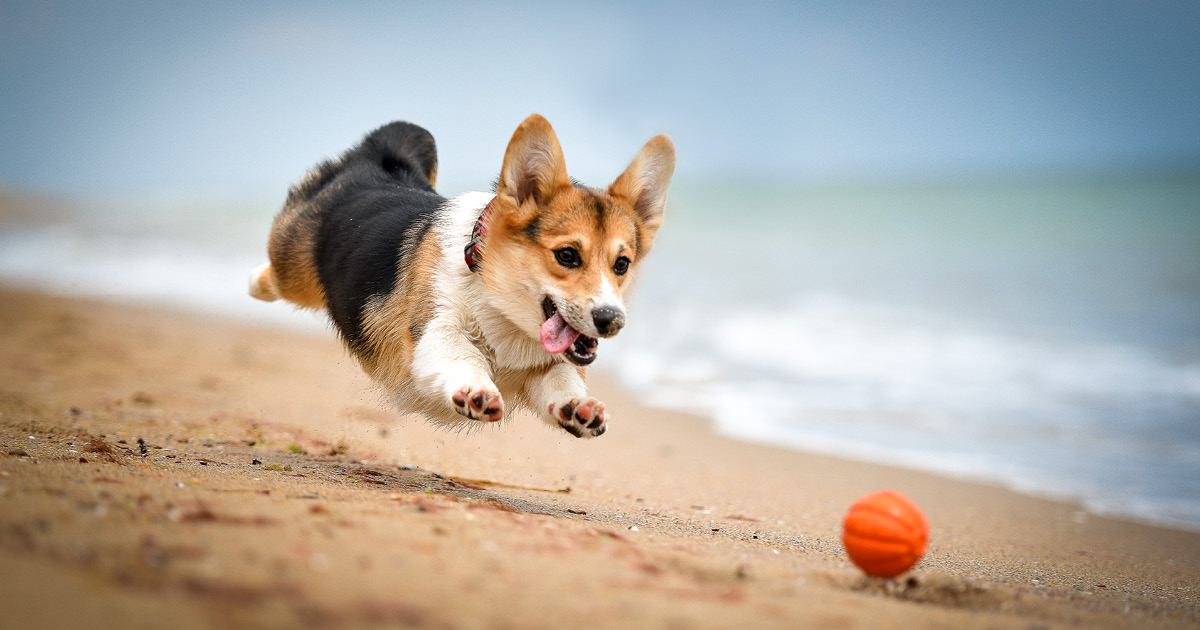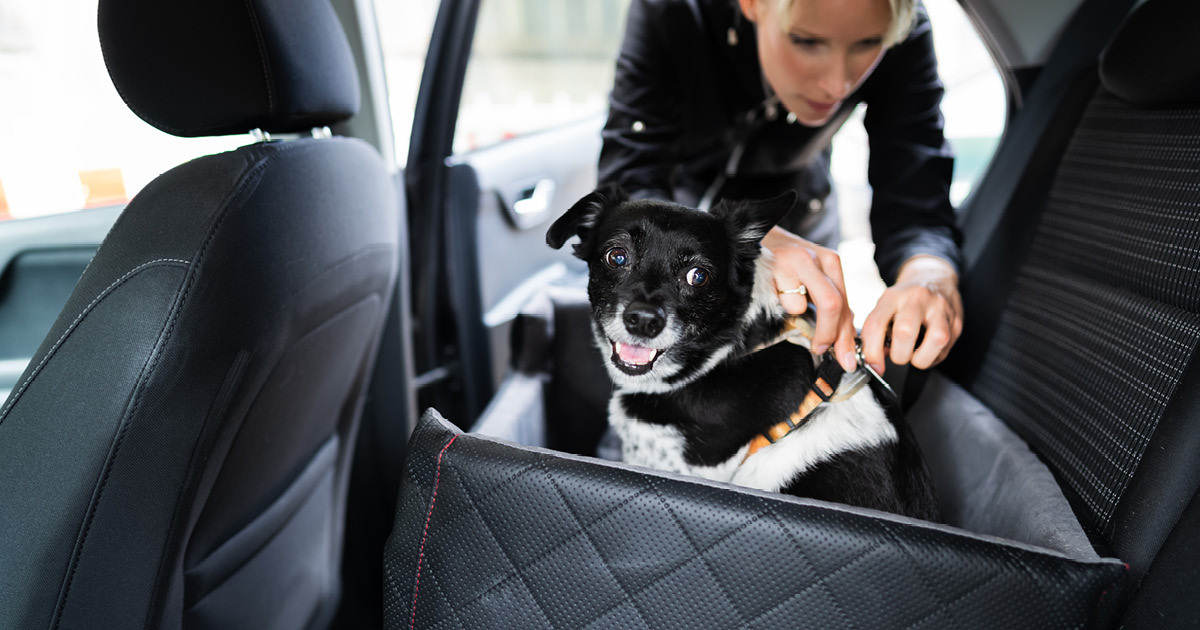
Pets have never been a bigger part of the family. So it only makes sense to include yours on the family vacation, right? Before you go, we’ve compiled some tips to help keep everyone safe when traveling with pets.
CONSULT YOUR VETERINARIAN
Your pet should be healthy enough for travel and current on his or her vaccinations. Share your vacation destination with your veterinarian so they can determine how to protect your pet from potential risks in that region. When you’re escaping the snowdrifts for the beaches, it’s easy to forget about flea, tick and heartworm preventives, so make sure you bring the right parasite protection.
UPDATE YOUR PET’S IDENTIFICATION
No matter how careful you are, pets can escape and get lost in unfamiliar locations. That’s why your pet should have an updated ID tag on his or her collar, including the address of your destination and your cell phone number.
If your pet dashes out without their collar, a microchip provides a backup. Veterinary clinics, shelters and animal control centers can scan your pet and find out how to reach you. Before departure, make sure your microchip company has your current contact information, including where you can be reached during vacation. There are even GPS devices with apps that enable you to track your pet’s location from your smartphone.
MAKE YOUR PET AT HOME IN A CARRIER
Whether you’ll travel by plane, train or car, it’s best to have your pet in a well-ventilated carrier. The carrier should be roomy enough to allow your pet to stand, turn around and lie down. Always provide a litter pan for cats and fresh water for all.
If your pet isn’t accustomed to being in a carrier, introduce it to them at home, several weeks before your departure. Pad the bottom with their favorite blanket and place treats or toys inside so they associate positive things with it. Leave the door open so they can explore inside, then try closing the door for short periods, gradually extending the time the door is closed.
TRAVELING BY PLANE
Most airlines make traveling with your pet relatively painless. Airline staff can be very accommodating to animals on most flights. Obviously, additional restrictions apply when flying with pets, but it’s not nearly as difficult as you may fear.
For flights within the United States, you’ll need a health certificate from your veterinarian within 10 days of departure that verifies your pet is healthy and current on vaccinations. International travel means additional paperwork and some countries require a quarantine period for disease control, so it’s important to determine what’s required well before you leave. Certain high-risk countries may have additional requirements, so be thorough in your research.
Although small dogs and cats may accompany you in the cabin in an approved carrier, larger pets generally travel in the cargo hold. During warmer months, try to schedule flights in the morning or evening when the temperatures are cooler. In winter, book flights in the middle of the day. Because tranquilizers can slow your pet’s breathing, they’re typically not recommended.
TRAVELING BY CAR
Inside the car, your pet’s carrier should be secure so they don’t distract the driver or become airborne in the event of an accident. The carrier should be anchored down so it doesn’t shift with the movement of the car.
Although dogs may ride in a seat if they wear a harness that fastens to a seat belt, avoid the passenger seat, because pets can be seriously injured if the airbag deploys. Regardless of how cute it may be, never let your dog ride with his or her head out the window while the car is moving. And never leave your pet in the car unattended.
If your pet isn’t used to riding in a car, make a few trial runs in the weeks before your trip. Place your pet in the carrier, drive around the block and then reward your pet with praise or treats. Gradually extend the length of the drive, ending somewhere fun, like a dog park.
LOCATE PET-FRIENDLY ACCOMMODATIONS
Before you go, find pet-friendly hotels along the way. Some may have limitations in terms of pet breeds and sizes, while others may offer special services like dog walking while you’re out for dinner. It’s best to know before you go.
BRING THE RIGHT STUFF
Things to pack include:
- Your pet’s regular diet
- Food and water bowls
- Bottled water
- Regular medications
- Flea, tick and heartworm preventives
- Cat litter pan, litter and scoop
- Dog waste bags
- Leash and collar
- Bedding
- Grooming supplies
- Life vests for dogs
- Sunblock for pets prone to sunburn
- Current veterinary contact information
- Contact information for clinics en route and at your destination
- Proof of current vaccination status
- Pet first aid kit
CONSIDER A PET STAYCATION
While it may be fun to have your pet accompany you on vacation, travel can be stressful, especially for cats and elderly pets. If your pet’s health or temperament could make travel a challenge, consider a pet staycation. Many boarding facilities offer group playtime, swimming and other activities. And if your pet can’t stay with a friend or relative, it’s possible to hire a pet sitter to care for your pet in the comfort of your home. With the right planning, a little R&R can do you both some good.
Your Pet Can Benefit from a Vacation, Too!

Unplugging from work and heading out on vacation can boost your happiness, decrease burnout and improve your overall mental and physical well-being. But did you know that your dog can benefit from a vacation as well? It’s true! Traveling with pets can help both dogs and cats emotionally, physically and spiritually. Here’s how!
READ MORE ABOUT HOW VACATION BENEFITS DOGS AND CATS
Tips for Camping with Your Dog

There’s nothing better than the great outdoors. Well, unless you include your pet when you decide to sleep under those shining stars. Here are 13 tips for getting outdoors with your dogs and having fun while keeping everyone safe.
READ MORE ABOUT CAMPING WITH YOUR DOG
Dos and Don’ts of Winter Pet Vacations

Vacations aren’t just for summer. Sometimes you want to load up your pet’s crate into the car and escape the snow. Whether your final destination with your furry family member is a sandy beach or a snow-covered slope, we’ll tell you how to deal with your pet’s air travel or whatever else you need to know to get dogs from here to there. Here are tips for getting out of town for a winter pet vacation.
READ MORE ABOUT WINTER PET VACATIONS
Puppy-Proof Your Summer Vacation

Summer vacation with an adult dog is typically smooth sailing for experienced pet parents. But add a puppy to the mix, and suddenly you can be in rough waters. Traveling with a puppy can be quite different than traveling with a fully grown, fully trained dog, so here are some things to think about before you em-bark on your vacation.
READ MORE ABOUT TAKING YOUR PUP ON VACAY
Getting Away but Taking Some Home with You

It can be complicated to take your dogs or cats on vacation with you, but it’s far from impossible. And with some pre-trip prep, the good far outweighs the difficult, and everyone benefits.
The information in this blog has been developed with our veterinarian and is designed to help educate pet parents. If you have questions or concerns about your pet's health or nutrition, please talk with your veterinarian.
